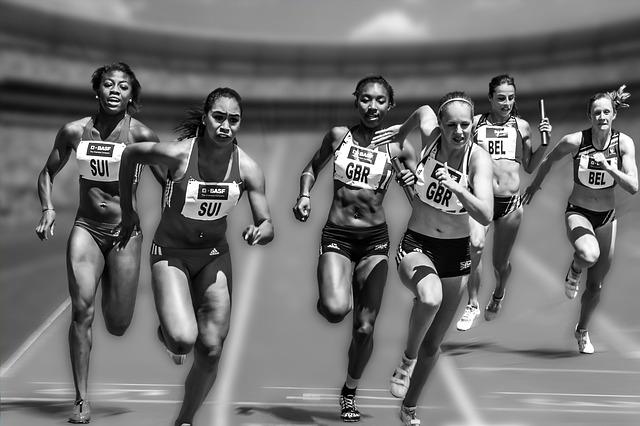
Discrimination against women athletes is often based on their looks. You can change this. First, you can take control of your body image. Also, you can participate in social media to challenge gender stereotypes. Finally, you can advocate for gender equality. These tips will enable you to be a part of the sporting community.
Regaining control of your body image
There is a growing movement among female athletes to take back control of their body images. These athletes have spoken about how the pressure to be "perfect" impacts their performance and mental health. Gracie Gold from the Olympic figure skating team and Allie Ostrander from professional running are two examples of those who have openly shared about their struggles with negative body image. These athletes want to show everyone that it is not a sign of weakness to have a body that does not fit a certain standard.
Female athletes are still vulnerable to body dissatisfaction even though they are under great pressure to improve body image. A mental condition called body dissatisfaction, which results in negative thoughts about one's body and the perception of a body that is smaller than the ideal body size. The context and function of the body can affect how you perceive it. In a recent study, female athletes from collegiate sports participated in "Bodies in Motion," an exercise program that aims to promote a positive body image.
Change the stereotypes of female athletes
It is important for female athletes to break down gendered stereotypes. Many women and girls are discouraged by the stereotypes they see. These stereotypes can be changed at home. It begins by teaching girls, and women, to respect one other and to be unique. It begins with changing the way that we talk about women. We can change the way we talk and act about female athletes.
While research on female athletes has largely focused on the bipolarity of masculinity and femininity, little has been done about androgyny. Androgyny refers to a compromise between masculinity/feminity. This suggests that a female runner can be both male/female simultaneously. This gender identity is a mix of assertiveness and gentleness, independence and dependence, competitive and passive, and can even be independent and dependent. A woman may have both masculine and feminine characteristics, which can be helpful for the individual.
Taking part in social media
Use social media to inspire younger women to get involved in sports. Stories about female athletes can often inspire them. This is one method to do so. The UConn Huskies won the Baylor Bears' game last night. Social media was completely dominated by this match. Although the final score was 69 to67 for the Huskies and the controversial call was the highlight of the evening, it was still a memorable game.
Participating in social networking can be a powerful way for young women to get involved in sport and to improve their health. Many female athletes now use social media to promote themselves. It is difficult to find out how women athletes present themselves online, however.
Managing gender stereotypes
Gender stereotypes can be a barrier to participation in sports. They might choose to ignore their athletic achievements and concentrate on other less stigmatized sports, or even quit their sport altogether. These issues are a reflection of larger cultural attitudes about athletic women. These stereotypes can be a barrier to participation in female sports.
First, women athlete must address the issue of public perception. The public views women as being submissive or objectified. Female athletes are often considered to be wives or daughters of male athletes. This toxic cycle of gender stereotypes often leads to the sexualization and objectification of female athletes. This has been brought to the forefront by the USA Gymnastics scandal.